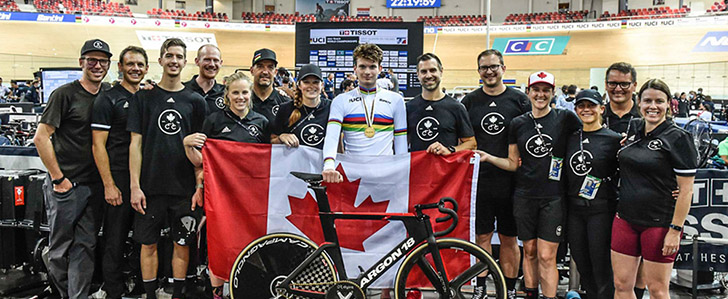December 6/03 5:19 am - Sports results
Posted by Editoress on 12/6/03
John Kernaghan, a columnist with the Hamilton Spectator, recently wrote an excellent article comparing the athlete funding system/sports model in Sweden and Canada. He has given us permission to reprint it here:
Memo to Paul Martin, PM in waiting:
When, as many anticipate, you name a full-fledged sport minister later this month, dispatch him immediately to this Swedish capital to learn how a country with just shy of nine million people enjoys such disproportionate sporting success.
Consider these humbling statistics: Sweden, with less than a third of Canada's population, sits seventh in the world in Olympic medals from 1896 to 1998, well ahead of Canada and many other larger countries.
As another measure, Sweden sits sixth in Summer Games medals with 452 medals while Canada is 15th with 214 medallions.
In the Winter Games from 1924 to 2002, Sweden edges Canada 108 to 96.
If you look at the math, the more remarkable number is the medal ranking in the summer events by a Nordic nation.
The anecdotal evidence is even more compelling. The wave of Swedish tennis players which Bjorn Borg led made the country a global power. Sweden is currently the world's top table-tennis nation, is a rising track and field player and produces elite hockey players in abundance.
So, how do they do it? We asked the president of the Swedish Sports Confederation, the umbrella for the country's 3,300 sports clubs, if anyone from Canada has ever posed that question.
"Not until you," said Urban Dahlberg.
I know what you're thinking. Like Australia or Britain, the Swedes must be providing big salaries, say in the $50,000-60,000 range, to help their best athletes and provide a carrot for others. Nope, it's not that. Sweden's system is similar to Canada's, with stipends almost identical to Canada's top-carded $13,200 being given to the best prospects through the country's Olympic committee.
And Dahlberg points out that many elite Swedish athletes receive little help with travel expenses. "A survey showed about half of the top 7,000 athletes had to pay their own way to participate in top events. The number of athletes who can make a living from their sport has increased, but many still have to pay themselves, especially in sports like skating, gymnastics and canoeing."
And it's not that, like Eastern Bloc nations prior to the fall of Communism, sports success is a blunt instrument of political policy.
The only real political element to Sweden's success is that, as a social democracy, the prevailing philosophy is access for all.
That means most of the countryside is not privatized, but available to runners, skiers and cyclists of all ages to pursue their activities.
And while it means support to build infrastructure, the biggest boon to athletes of all ages and stripes is that high degree of participation and volunteerism.
Dahlberg says about half of Sweden's population between 7 and 70 belongs to sporting clubs. But the more startling number is the estimated value of volunteer help in running sports facilities and administration and coaching in sports clubs: a staggering $2.3 billion. Canada surely has a strong volunteer base, too, but it rarely leans to the actual operation and maintenance of rinks and fields.
The happens within the club system in Sweden, which often encompasses several sports under one name.
Maple Leaf captain Mats Sundin, for example, grew up in the Djurgarden club in Stockholm, playing soccer and hockey.
As he pointed out when the Leafs were in Sweden for pre-season games against the likes of his old club, the system promotes strong loyalties for clubs by neighbourhood.
"When you grow up in a club like I did, the club teams are yours for life."
Mercifully, though, those affiliations don't extend to the kind of tribal behaviour that has stained English soccer.
Two other factors play into Swedish success on the global scene. One is that sport, play and fitness go hand in glove with family life, the second that sport and play is mandatory in Swedish schools.
In fact, the country even has what they call Sports High School. These provide an outlet for high-spirited students who earn the right to ski, skateboard or cycle on school time by sticking to their academic studies.
So, Paul, maybe we should look beyond the last two years of soul-searching that created a national sports policy.
Remember when federal fitness freaks tried to shame Canadians into getting more active, claiming a 30-year-old Canadian would have trouble keeping up with a 60-year-old Swede? Arguably, Paul, we're closer some 30 years later. But we're still well behind when it comes to producing world-class athletes.
jkernaghan@thespec.com
905-526-3422
| Return to Canadian Cyclist homepage | Back to Top |





